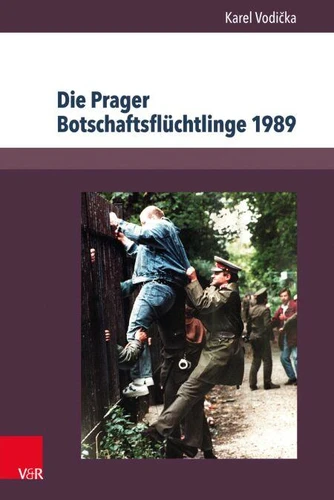Die Prager Botschaftsflüchtlinge 1989. Geschichte und Dokumente
Par : ,Formats :
Disponible dans votre compte client Decitre ou Furet du Nord dès validation de votre commande. Le format PDF est :
- Compatible avec une lecture sur My Vivlio (smartphone, tablette, ordinateur)
- Compatible avec une lecture sur liseuses Vivlio
- Pour les liseuses autres que Vivlio, vous devez utiliser le logiciel Adobe Digital Edition. Non compatible avec la lecture sur les liseuses Kindle, Remarkable et Sony
 , qui est-ce ?
, qui est-ce ?Notre partenaire de plateforme de lecture numérique où vous retrouverez l'ensemble de vos ebooks gratuitement
Pour en savoir plus sur nos ebooks, consultez notre aide en ligne ici
- Nombre de pages453
- FormatPDF
- ISBN978-3-8470-0345-8
- EAN9783847003458
- Date de parution17/09/2014
- Protection num.pas de protection
- Taille4 Mo
- Infos supplémentairespdf
- ÉditeurV&R Unipress
Résumé
1989 - what a fateful year! In the autumn of 1989 Czech and German history touched each other in a very special way. Tens of thousands of East German citizens fled to freedom through Prague. The very existence of the East German regime was undermined by mass exodus, the closing of borders and civil unrest. Finally, the Berlin Wall fell. But even prior to this, events around the West German embassy in Prague and the mass protests in East Germany gave Czechs and Slovaks the decisive impetus to shake off their own regime.
Almost at the same time as the East German regime, the communist dictatorship in Czechoslovakia collapsed. Karel Vodicka meticulously reconstructs the events in West and East Germany and in the CSSR during those turbulent weeks that ultimately led to the collapse of two communist regimes. He thereby makes use of sources of East and West German as well as Czechoslovakian origin, which provides completely new insights into the ambivalent relations between Prague and East Berlin in the last months of their rule.
Almost at the same time as the East German regime, the communist dictatorship in Czechoslovakia collapsed. Karel Vodicka meticulously reconstructs the events in West and East Germany and in the CSSR during those turbulent weeks that ultimately led to the collapse of two communist regimes. He thereby makes use of sources of East and West German as well as Czechoslovakian origin, which provides completely new insights into the ambivalent relations between Prague and East Berlin in the last months of their rule.
1989 - what a fateful year! In the autumn of 1989 Czech and German history touched each other in a very special way. Tens of thousands of East German citizens fled to freedom through Prague. The very existence of the East German regime was undermined by mass exodus, the closing of borders and civil unrest. Finally, the Berlin Wall fell. But even prior to this, events around the West German embassy in Prague and the mass protests in East Germany gave Czechs and Slovaks the decisive impetus to shake off their own regime.
Almost at the same time as the East German regime, the communist dictatorship in Czechoslovakia collapsed. Karel Vodicka meticulously reconstructs the events in West and East Germany and in the CSSR during those turbulent weeks that ultimately led to the collapse of two communist regimes. He thereby makes use of sources of East and West German as well as Czechoslovakian origin, which provides completely new insights into the ambivalent relations between Prague and East Berlin in the last months of their rule.
Almost at the same time as the East German regime, the communist dictatorship in Czechoslovakia collapsed. Karel Vodicka meticulously reconstructs the events in West and East Germany and in the CSSR during those turbulent weeks that ultimately led to the collapse of two communist regimes. He thereby makes use of sources of East and West German as well as Czechoslovakian origin, which provides completely new insights into the ambivalent relations between Prague and East Berlin in the last months of their rule.




